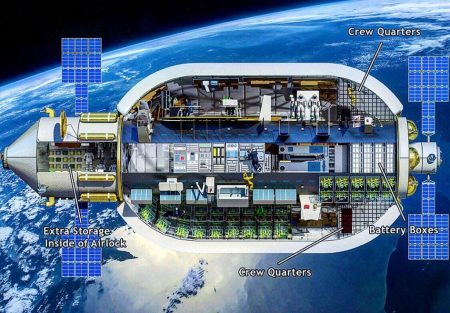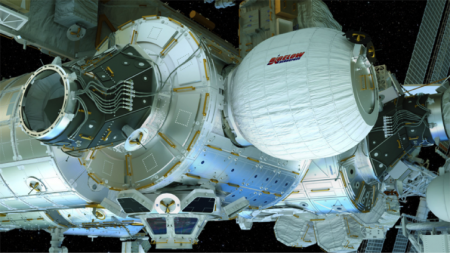February 25, 2018 – As reported in the Aerospace Daily in the last week, Bigelow Aerospace, the inventors of inflatable space habitats, is lobbying the United States government to make near-Earth space the domain of commercial business. That’s not to say we will start seeing satellites with banner ads crossing the nighttime skies. Bigelow, however, does feel that NASA can utilize its budget dollars to explore Deep Space, and pursue technological innovation around habitability beyond low-Earth. That’s because Bigelow believes it already has that covered with its BEAM technology. BEAM, seen below, stands for Bigelow Expandable Activity Module, currently installed on the International Space Station (ISS) since May of 2016. BEAM is undergoing long-term testing as a future space structure that could eventually be turned into habitable low-Earth orbit accommodation.
NASA too is reorienting the agency towards Deep Space activity with talk from the current U.S. administration of commercializing the ISS by the mid-2020s to minimize its involvement in the low-Earth orbit space. Instead, the new direction is to develop a human presence in lunar orbit within the decade as well as a permanent human presence on the Moon before 2030. NASA is joined in this ambition by Russia’s Roscosmos, the European Space Agency, and China. But currently, NASA’s ambitions are outrunning its forecasted budgets which is problematic if the agency hopes to achieve a move away from a low-Earth orbit focus for its humans in space program. Nor does it appear that NASA is looking at how other national space agency programs concur with the proposed transition to make low-Earth orbit the place where commercial enterprises operate.
Robert Bigelow has pointed out that ISS and NASA’s more far-reaching ambitions will die a death by a thousand cuts without an accompanying financial plan. In Aerospace Daily he is quoted stating, “It’s not a zero-sum game that one day you have it and one day you don’t, as far as the ISS is concerned.”
BEAM appears to be a success on ISS with NASA extending the budget for its stay for three more years plus two additional one-year options. Meanwhile, Bigelow Aerospace intends to produce a successor to BEAM with 2.4 times the volume of the ISS and capable of being launched into low-Earth orbit by a single rocket. The company hopes to have it in low-Earth orbit by 2021.
Will this be the first commercial space station? A hotel in space? Robert Bigelow has hinted in the past that he wants to do both.











